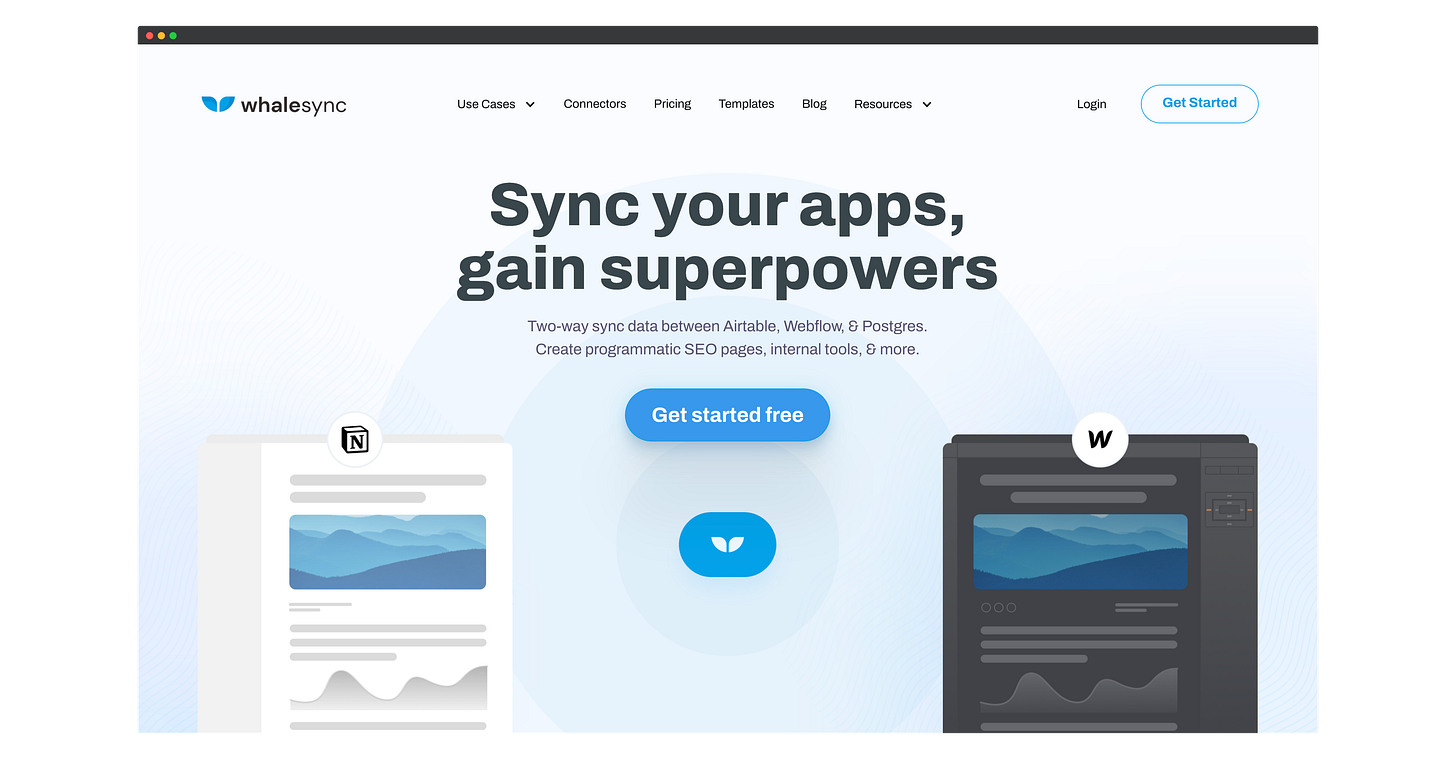🐋 Syncing Success: A Deep Dive into Integrations with Whalesync's Matthew Busel
Unpacking Whalesync's approach to prioritizing, building and implementing integrations
Hi friends!
Today, we've got an insightful deep dive into the world of integrations with Matthew Busel, co-founder of Whalesync. It's the first installment in part of our new series where we explore the integration strategies of some of the most innovative players in the industry.
Whalesync is a no-code tool that excels in enabling two-way data sync across popular apps, and Matthew was kind enough to share their integration journey. He takes us through Whalesync's approach to integration prioritization, their process of building new integrations, and how they support customers.
Here's a snippet of our conversation:
Hi Matthew! Tell us about yourself and Whalesync. How do integrations contribute to your overall business strategy and goals?
Hi, I’m Matthew and I’m one of the co-founders of Whalesync. We’re a no-code tool that lets you two-way sync data across apps like Airtable, Webflow, Notion, & Bubble. Our users use Whalesync to build programmatic SEO pages, internal tools, and no-code apps.
By nature of our product, integrations is one of the most important aspects of our business. The more tools we integrate with, the more functionality we offer, and ultimately the more problems we can solve for our users.
When it comes to integrating new services with Whalesync, how do you prioritize which integrations to build?
Enabling two-way sync use cases requires deep integrations that go beyond what most automation tools offer. For this reason, prioritization is really important for us because any integration we decide to build takes significant time & effort to reach our quality bar.
We have a number of different factors that impact prioritization including:
How many times it’s been requested by users/potential users
Whether the connector enables a use case that we’re strategically focused on
How much better of an experience we believe we can offer than existing solutions
In summary, we try to build the connectors that our users ask us for, that solve their biggest problems, and that align with our strategy…
Stay tuned for more stories from SaaS leaders on their integration approaches in our upcoming issues. As always, if you have any questions or would like to share your own integration journey, don't hesitate to reach out.
Until our next deep dive!
Cheers,
Lola


